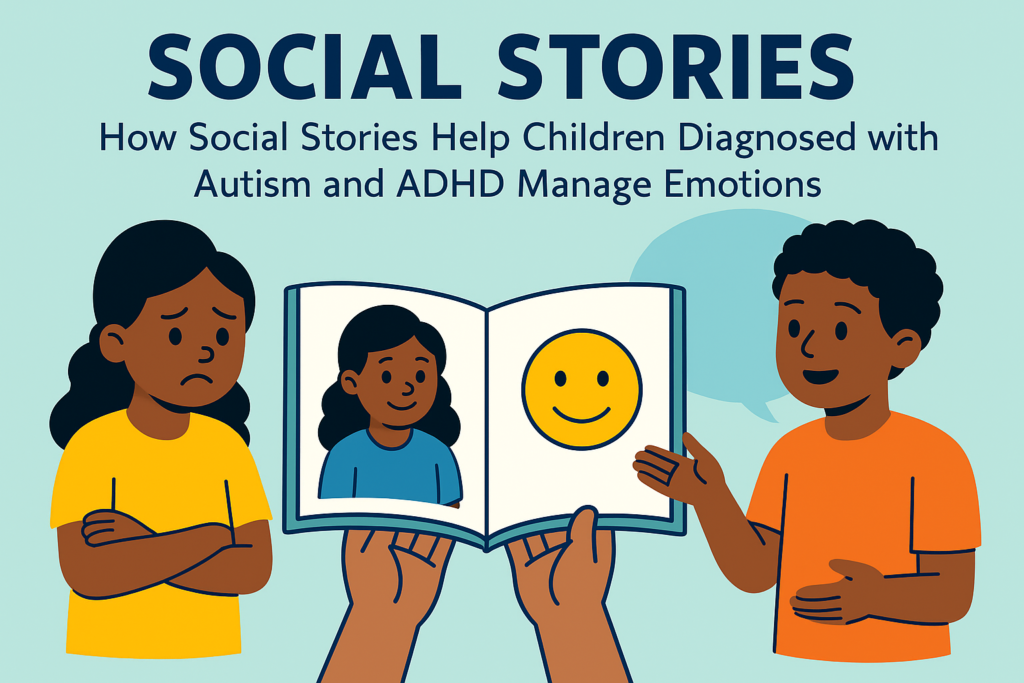April 17, 2025

Helping children with Autism and ADHD navigate emotions can be challenging. Many struggle to understand their feelings, express them appropriately, or manage emotional reactions in social situations.
This is where Social Stories come in a simple yet powerful tool that fosters emotional regulation, social understanding, and positive behaviour.
Developed by Carol Gray, Social Stories are short, structured narratives that help children:
1. Understand emotions
2. Learn appropriate responses
3. Reduce anxiety in social situations
4. Develop emotional intelligence
For children with ADHD, Social Stories can also improve impulse control and self-regulation.
Social Stories use simple language and visuals to describe situations and provide strategies for handling emotions. They help children predict outcomes, reducing frustration and confusion.
Here are some examples of Social Stories for emotional regulation:
Example 1: Handling Frustration
“Sometimes, things don’t go my way. When I feel frustrated, I can take a deep breath, count to five, or ask for help. It’s okay to feel frustrated, but I will try not to yell or hit. Staying calm helps me feel better.”
Example 3: What to Do When Someone Says ‘No’
“Sometimes, I ask for something, but my parents or teacher say ‘no.’ I might feel upset, but that’s okay. I can take a deep breath and say, ‘Okay.’ Sometimes, I can try again later. Other times, I need to accept the answer. Staying calm helps me feel better.”
Example 2: What to Do When I Feel Angry
“When I feel angry, I can use my words and say, ‘I am mad.’ I can take deep breaths, hug a pillow, or go for a walk. When I calm down, I can talk about how I feel. Staying calm helps me and those around me.”
Example 4: Waiting for My Turn
“I like to talk and play, but sometimes I have to wait. While I wait, I can take deep breaths, count to ten, or think about something fun. Everyone gets a turn, and waiting nicely makes people happy!”
Example 5: How to Apologize When I Hurt Someone’s Feelings
“If I say something that makes someone sad, I can say, ‘I’m sorry.’ If I don’t know what to say, I can ask an adult for help. Saying sorry helps my friends feel better and shows I care about them!”
READ ALSO: RAISING INDEPENDENT CHILDREN ON THE AUTISM SPECTRUM: A Parent’s Guide

1. Identify the Challenge – Focus on a specific emotion or situation.
2. Use Simple Language – Keep it clear and easy to understand.
3. Add Visuals – Pictures or drawings help reinforce the message.
4. End Positively – Reinforce that using these strategies will help them feel better.
Social Stories are more than just words on a page, they’re a bridge to understanding, coping, and thriving in a world that can feel overwhelming. Whether your child is diagnosed with Autism, ADHD, or both, these stories can provide comfort, structure, and tools for managing emotions with confidence.